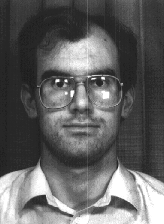
![[GlobalNews Home]](../globe.gif)
![[Prev Page]](/images/arrow-left.gif)
![[Next Page]](/images/arrow-right.gif)
Huub Appelboom
Huub Appelboom was born on 28 September 1963 in Amsterdam, The Netherlands. He holds an engineering degree in Applied Physics from the Delft University of Technology, The Netherlands, where he studied the metal-insulator transition in materials like granular aluminum and niobium-silicon in the group of professor J.E.Mooij. He obtained his PhD in the same group, and the subject of his PhD thesis was the fabrication and analysis of co-evaporated high temperature superconductor thin films. In November 1992 he joined the Matsuda group in NTT Basic Research Laboratories to work as a post-doc on the same subject for one year. He mainly worked at NTT on the doping of these films with non-isovalent cations. Currently he has returned to The Netherlands to continue working with high temperature superconductors for about half a year (if you are in The Netherlands, don't hesitate to stop by and pay him a visit!)
Dr. Appelboom is (still) a happy bachelor, enjoys cooking & dining out, loves "wit bier", cycling, playing squash, soccer, skiing, and reading. He also runs a small company in his spare time for making & selling software.

Guy Austing studied Natural Sciences (Physics) as an undergraduate at Cambridge University (UK). He did his Masters in Semiconductor Science and Technology at Imperial College (London), and completed his D.Phil.at Oxford University (UK) in autumn 1992. His D.Phil. research involved the electrical characterisation of simple semiconductor structures subjected to hydrostatic pressure. After finishing his D.Phil., Dr Austing joined NTT Basic Research Laboratories at Musashino in November 1992. He works in the Tarucha Group within the Physical Sciences Group. He currently pursues research of the quantum properties exhibited by ultra-small semiconductor devices in the new facilities of Basic Research in Atsugi.
Valerie Blavette studied computer and telecommunications engineering at the "Institut National des Telecommunications" in France. She spent six months in the French-Polish School of Poznan, Poland, where she specialized in Network Management and Economy.
In June 1993 she joined NTT Communication Switching Laboratories for a six month training period. Here she modelled, simulated and evaluated the performances of a message-based system architecture.
The opportunity to work at NTT has allowed her to complete the work for her engineering degree. She also discovered Japanese culture and enjoyed it a lot.
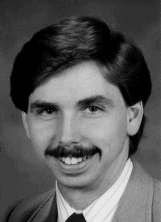
John Canning did his undergraduate work in electrical engineering at the Massachusetts Institute of Technology and his graduate work in computer science at the University of Maryland, College Park. In between the two degrees, he worked as a research engineer at Thomson-CGR in Paris, France. Thomson-CGR was in the business of building medical image processing equipment (it has since been sold to General Electric). His graduate work in computer vision focused on recognizing objects with varying shapes and numbers of parts. After finishing his PhD, he worked at Loyola College in Baltimore, Maryland, analyzing images of the human retina in order to detect the onset of glaucoma.
Dr. Canning joined NTT's Basic Research Laboratories at Musashino in January 1992. He works in the Naito Group within the Information Science Division. He continues research in model-based recognition. His wife, June Fox, helped with the layout of the first and second issues of Global News. Since mid-October, both John and June spend most of their time with their new son, Jamison Gregory Fox-Canning.
Adrian Lo received his BSc in materials science from Imperial College (University of London) and went on to the Department of EEE of the same college where he gained his PhD for his work on amorphous semiconductors and their applications in imaging devices. Before coming to Japan, he spent a short time in Singapore working on materials and micro-contamination problems. At NTT Human Interface Laboratories, Dr Lo's research is concerned with the development of a a next-generation facsimile system for colour document communication on ISDN.
Reiko Mazuka is currently an assistant professor in the Department of Psychology-Social & Health Sciences at Duke University. She received her BA and MA in psychology from Nagoya University, Japan, and a second master's degree in linguistics from University of Edinburgh, Scotland. Her PhD is in developmental psychology from Cornell University.
Her area of research is in psycholinguistics in a very broad sense. She has worked on first language acquisition, infant speech perception, as well as natural language processing, using a cross-linguistic research paradigm comparing English and Japanese. She is a recepient of an NSF Young Investigator Award for 1993.
For 1993-1994, she is an invited researcher working in Kakehi Group, at the Basic Research Laboratories. Her primary research this year is psycholinguistic investigation of Japanese sentence processing, where she and her colleques at NTT are investigating the strategies that the native speakers of Japanese take when they read/hear Japanese sentences that may involve temporal ambiguity.
Francis Pitcho graduated from the French engineering school Telecom Paris in 1990. After working 5 months in France for Alcatel developing a software on a PABX, he came to Japan in 1991 as an assistant to the Science and Technology Counselor at the French Embassy in Tokyo. In July 1993 he joined NTT Communication Switching Laboratories in Musashino as a visiting researcher with an STPJ Fellowship from the European Communities. He is now working in the Broadband Network Systems Laboratory on Traffic Control for ATM networks (B-ISDN) and his supervisor is Dr. Yamanaka. He enjoys hiking and skiing .
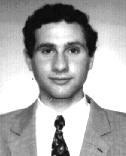
David Rogers did both his undergraduate and graduate studies at Glasgow University in Scotland. His PhD research was concerned with the physical and magnetic microstructure in magnetic recording materials. After completing his doctorate degree in 1990 he worked for two years at Carnegie Mellon University in Pittsburgh studying a variety of magnetic thin films for recording applications. In 1992 he moved to Japan to work with Dr Y. Maeda at NTT's Ibaraki R&D Center. Dr. Rogers is currently investigating the role of compositional inhomogeneities in controlling the magnetic and recording properties of thin film magnetic recording materials.
J. Steven Rutt majored in chemistry at the small, liberal arts school, Goshen College, in Goshen, Indiana, after surviving childhood and adolescence in Indonesia and Pennsylvania He received his PhD in synthetic inorganic
polymer chemistry from The Pennsylvania State University, and his thesis work involved developing new (and hopefully interesting and useful) phosphazene compounds, a class of inorganic polymer similar to the more well-known (but less interesting and more useful) silicones. Applications for phosphazene polymers include electrolytes, bio-implants, high-performance elastomers, and flame-retardants: no,it isn't (all) alchemy!
As a post-doc at the University of Massachusetts' Department of Polymer Science and Engineering, he studied phase behavior of blends of poly(phenylene vinylenes), a class of conjugated polymer of interest for electronically conductive materials, battery, non-linear optical, and electroluminescent materials application. As a post-doc at NTT, since April 1992, he has helped to develop a new class of dual-phase electrolytes based on commercially-available and garden-grown polymer lattices.
His wife, Caixia Lu, has worked this past year at RIKEN as a post-doc, and his son, Adam, will soon turn two. His recent hobbies include teaching himself kanji and technical Japanese, reading about Japanese history and culture, and studying the relation between technological innovation, technology transfer, and society.
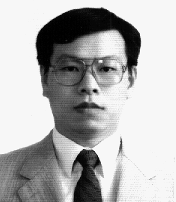
Young-Seok Shin received his BE, ME and PhD degrees in electronics from Jeonbug National University in Jeonju, Korea. He is a member of ETRI (Electronics and Telecommunication Research Institute) in Korea In ETRI, he was involved with LAN developement, X.25 protocol and ATM network research. He participated in the activity of B-ISDN standardization in CCITT SG XVIII as a Korean member from 1989 to 1992.
In April 1993 Dr. Shin joined NTT Teleommunication Network Laboratories as a visiting scientist for one year. Here he is presently working in the field of high-speed multi media computer communication network research.
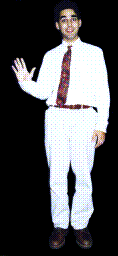
Cyrus Shaoul received his undergraduate degree from MIT's Deparment of Brain and Cognitive Science. As an undergraduate he did two years of research (including summers) at the Media Lab at MIT. This work included Human-Computer Interfaces and Virtual Worlds. In 1991 he spent three months in Japan doing research at Kodak's ill-fated R&D lab in Midori-ku, Yokohama. He plans to continue graduate studies in September 1994.
In August 1993, he joined NTT Human Interfase Laboratories at Yokosuka. He works in the Suzuki Group of the Visual Media Laboratory. His research centers on using 3 dimensional graphics to represent virtual environments, and to find out how people can use such environments to communicate.
Oliver Staadt is currently a graduate student in computer science at the Technical University of Darmstadt, Germany. After graduating he worked at Computer Graphics Research Center(ZGDV) in Darmstadt His work focused on computer graphics, e.g. volume reconstruction and rendering of medical MRI data.
Mr. Staat joined NTT Human Interface Laboratories for a four month trainee program in August 93 and is working at the Computer Graphics Group of the Autonomous Robot Systems Laboratory. He works on bump rendering techniques, methods to enhance reality of surface details in computer generated images.
Lalita Suzuki graduated from Stanford University in June, 1993 with a B.A. in Psychology. As an undergraduate, her work focused on child development and cross-cultural/interethnic issues. Her research projects at Stanford included participation in three separate studies on Childhood Metamemory in Dr. John Flavell's lab as well as an individually designed honors project titled, "Gender and Ethnicity as Factors in Childhood Identity. "Upon graduation, she spent the summer of 1993 participating in research on issues such as prenatal care for minority women and individualism and collectivism in indigenous psychologies at the University of Hawaii.
Ms. Suzuki has been working as a research trainee at the NTT Basic Research Labs in Musashino since September 1993 with the Kakehi Research Group. She is participating in psycholinguistic research on issues in Japanese sentence processing with Dr. Reiko Mazuka of Duke University. She plans to begin a graduate program in Psychology in September of 1994.
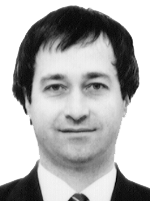
Eduardo S. Vera received his BS and MS degrees in Physics from the University of Chile in Santiago in 1974 and 1976, respectively. He continued graduate studies at Brown University, Rhode Island, USA, where he completed his PhD degree in Physics in 1982, with a doctoral thesis on photovoltaic devices.
In 1983, he joined Philips Laboratories, Briarcliff Manor, New York, conducting research in power integrated circuits. At Philips, he was responsible for the design of a high voltage power lateral MOSFET for lighting applications. In 1987, Dr. Vera became scientific editor for the AIP and VCH Publishers, where he solicited, evaluated and coordinated technical input for the compilation of the first extensive (20 volume) Encyclopedia of Applied Physics for scientists and engineers.
Since 1990, he has been a Research Fellow with NTT Interdisciplinary Research Laboratories in Musashino, Tokyo. As a member of NTT Advanced Technology Corp., he is currently engaged in the modeling and simulation of power semiconductor devices for advanced telecommunications systems. He is interested in the study of microsystems and participates in the weekly discussion meetings of the mechaphotonics research group. Recently he has also been devoting time to develop applications of advanced communications in science and technology information systems.
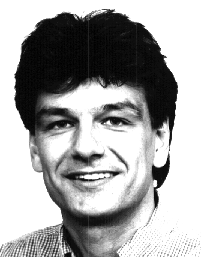
Helge Weman received his PhD in materials science at the Department of Physics and Measurement Technology at Linkoeping University, Sweden. His thesis work was focussed on optical studies of defects and impact ionization of excitons in silicon. After finishing his PhD he became a post doctoral fellow at the NSF Center for Quantized Electronic Structures (QUEST) at the University of California, Santa Barbara, from 1989 to 1991. There he studied the optical properties of low dimensional quantum structures (quantum wires), especially on the so called serpentine superlattice. In 1992 he became an assistant professor at Linkoeping University, Sweden where he is continuing his research on quantum structures in collaboration with QUEST. His group is now especially interested in magneto-optical studies of quantum wires and dots using high magnetic fields.
Dr Weman is presently a visiting scientist at the NTT Opto-electronics Laboratories in Atsugi. He works in Dr. Tamamura's Group where he will be involved in the fabrication and characterization of InGaAs and InAsP wires and dots for laser applications.
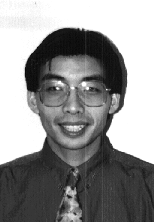
Wu Wen did his undergraduate work in Astronautical Engineering at Beijing University of Aeronautics and Astronautics between 1981 and 1985, graduating with 1st Class Hon. degree at the age of 19. He then worked in this university and taught undergraduates. With the support of the K. C. Wong Education Foundation of Hong Kong, he then went to Britain and studied System s Engineering at the University of Wales, where he was granted M.Sc the following year. Between 1988 and 1992 he pursued his D.Phil at the Robotics Research Group of Oxford University with a U.K. Overseas Researcher Schorlarship. Between 1990 and 1992 he worked on the EC sponsored ESPRIT Project as a research assistant while finishing his D.Phil in June 1992. His doctorate thesis was concerned with multi-sensor geometric estimation in robotics.
Dr. Wen joined NTT's Communication Science Laboratories at Kyoto in August 1992. He works in the Nakano Group within the Distributed AI division. His current research interest is "Learning to Perceive" in mobile robotics.
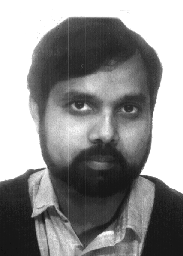
Sudhakar Yarlagadda received his undergraduate degree in Chemical Engineering>from I.I.T. Kanpur (India) in 1980. He then went to Purdue University (USA) where he obtained a M.S. in Chemical Engineering (1984), a M.S. in Physics (1985), and a PhD in Physics (1989). For his masters degree he worked on microstructural characterization of colloidal dispersions using light scattering. As for his PhD work, he studied the many-body effects in electron gas especially in two dimensions. After finishing his PhD work, he went to Max Planck Institute in Stuttgart (Germany) where he worked on quantum Hall effect related phenomena for slightly over two years. He is currently at NTT Basic Research Laboratories and is interested in high Tc superconductivity related phenomena.
![[GlobalNews Home]](../globe.gif)
![[Prev Page]](/images/arrow-left.gif)
![[Next Page]](/images/arrow-right.gif)